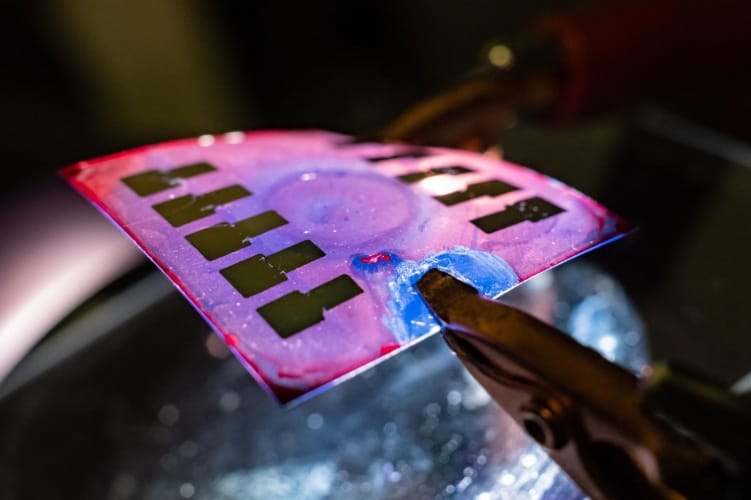
Described in the American Chemical Society journal Chemistry of Materials, the cells rely on organic carbon-based polymers rather than inorganic silicone. Rather than develop solar-harvesting organics from scratch, the Rice team began with rigid organics that were known to work, tweaking their composition in order to add mechanical flexibility. This was achieved using sulphur-based thiol-ene reagents where the molecules blend with the polymers and then crosslink with each other to provide elasticity.
"If you stretch or bend things, you get cracks in the active layer and the device fails," said Rice chemical and biomolecular engineer Rafael Verduzco.
"Our idea was to stick with the materials that have been carefully developed over 20 years and that we know work, and find a way to improve their mechanical properties.”
The amount of thiol-ene is key to determining the level of flexibility while also having an impact on the cells’ conductivity. Too little thiol-ene leaves the crystalline polymers prone to cracking under stress, while too much dampens the material's efficiency. After extensive testing, the team found that 20 per cent thiol-ene allowed the cells to retained their efficiency while also gaining flexibility.
"If we replaced 50 per cent of the active layer with this mesh, the material would get 50 per cent less light and the current would drop," Verduzco said. "At some point, it's not practical. Even after we confirmed the network was forming, we needed to determine how much thiol-ene we needed to suppress fracture and the maximum we could put in without making it worthless as an electronic device."
"We found there's essentially no loss in our photocurrent up to about 20 per cent. That seems to be the sweet spot."
The efficiency of organic PV cells currently only reaches about 15 per cent, but Verduzco believes the flexibility of his devices will bring a utility that has been overlooked in the pursuit for outright energy performance.
“The field has been obsessed with the efficiency chart for a long time," he said. "There's been an increase in efficiency of these devices, but mechanical properties are also really important, and that part's been neglected."




Nanogenerator consumes CO2 to generate electricity
Nice to see my my views being backed up by no less a figure than Sabine Hossenfelder https://youtu.be/QoJzs4fA4fo